#corydora breeding
Text
1 week old peppered corydora catfish 🤗
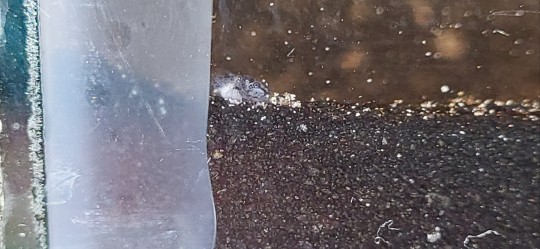
2 notes
·
View notes
Text



Today in fish nonsense! 🐟🐠- Tank is good to go! Cool wood piece is cleaned and time to spend way too long on a plan painting.
More below the cut.
Tank has been set up, leak tested so it's good to go (after I overhauled the layout of my office ... still dealing with the fallout of that though lol) and the piece of jarrah/mirra? wood that my Dad grabbed from the tree he cut down on a farm (noting this specifically because it's actually now illegal to commercially harvest Jarrah in my state - this was on private property so it's legal) has had the absolute crap scrubbed out of it - I mean literally, in the process I found yet another interesting hole in it so that's cool, then high-pressure blasted with water so I am finally ready to think about scaping.
Which apparently means spending longer than I should drawing a plan lol. This piece is super awkward to work with I think - while functionally interesting it has a silhouette that makes me oscillate between 'boring' and 'awkward'. After talking to some artist friends, generally it was agreed I'd need to put more stuff in there to actually make it look better, right now naked glass is super harsh. Problem is, rocks and wood? Well in the aquarium hobby that shit is expensive. We're talking 60 AUD+ for pieces of wood. I mean they are fully cleaned and treated (?) and selected for being interesting, but I have a budget and I'd like to save as much of it as I can for more than just harscape sooooo planning is just the right idea here.
Thinking seiryu stone because I looooove the white veining through it, and then for the branches to break up the shape it's probably going to be spiderwood or something (as much as I love mopani wood I don't think it usually sells branched like this - but I will watch out for it) but the good part is these pieces are all probably going to be on the smaller side since I have my huge hunk of feature wood for free.
I don't know how this piece of wood will interact with inhabitants, I've soaked it for probably a month at this point to get a large amount of the tannins out (and I know it waterlogs, which is great because I won't have to play 'how long will this take to sink') but also to help the looser material come off so all I'm left with now is the hard stuff. It's also now sitting in the sun (and I mean sun - it is going to be 40C today and the next few days so that shit is gonna bake 💀) but prior to that has been sitting in the sun either here or the farm for a total of about idk ... at least a month? Maybe more?
I've struggled to find information on whether Jarrah or Mirra wood is safe beyond one post on a forum where someone-who-knew-someone at a local fish shop had put a piece of this in his store tank and all the fish died. Beyond that? no more context. According to my freshwater ecologist friend I caught up with, she thinks it's probably going to be okay given the amount of time/work put in. I have not done a bleach soak and I don't think I really need to given the amount of time it's been soaking in regular tap water (so already contains chlorine) and sun exposure. There will still probably be tannin leakage into the water but I'm okay with having a mild blackwater tank after seeing one in my LFS, I actually like the slight tannin tint of water and how it makes everything a little 'softer'. But I do ACTUALLY want to be able to see though lmao. I've also seen Jarrah seed pods sold locally specifically for blackwater tank setups so it might be fine?
Either way the plan is going to be: Scape, plant, cycle and then introduction of some cheap shrimp as my poor guinea pigs to see if that wood actually is awful.
Right now I'll just have to painstakingly go through plant choices and placement and making sure it lines up with the planned parameters for the community. I absolutely will take suggestions btw.
More soon. Fish nonsense will contain fish ... at some point. I swear lmao.
#kerytalk#aquablr#fishblr#my art#I guess even though this is a grossly overconfident doodle#aquascaping#yes that is a sandpit for enrichment#though I'm debating corydoras#I worry tetras + corydoras might be too much schooling happening for the eventual last edition - Betta fish#if not then it'll be tetras + one pleco#... I swear I saw a video of a pleco thoroughly enjoying burrowing in sand - I'd love that#yes all of this is primarily because I want a betta#but if I only get one tank ... go hard or go home right?#ngl considering getting a small 5-10 gallon for my bedroom for shrimp breeding so that could be a feasible second plan#in case the betta is an asshole#do not tell my parents lmao#I'd love a male in the tank but know it's probably not going to work so female is more likely - or at least plakat type#it's got quite a bit of height to traverse so I don't think anything with super big fins would be great - especially with age#even if I basically have a stepped up network of holes in this wood right to where it nearly touches the surface
23 notes
·
View notes
Text
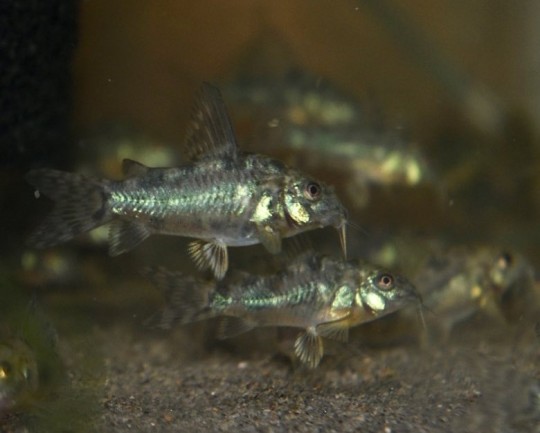
This was from the first time I bred and raised corydoras. love how the paleatus corydoras colors pop
5 notes
·
View notes
Text
the aquarium hobbyist in me has been absolutely fuming about Encanto for about 8 months now because the fish they chose to give senora pezmuerto is a fuckign GOLDFISH.... THEYRE IN SOUTH AMERICA. CHOOSE ANY OTHER PLEASE.
she should’ve had a german blue ram or something that’s all im saying.
#ill give you your redemption arc osma perzmuerto i know you didnt have a goldfish that was just for theatrical purposes#bruno killed your fish and ill avenge you by giving you a flourishing school of corydoras#and at least five successfull breeding pairs of cichlids#encanto
32 notes
·
View notes
Text

ive been keeping corydoras for about two years and this is the first time ive seen their eggs before they get devoured
#im fairly certain they're not from the frog bc they don't just randomly lay eggs without a breeding partner i think lol#meanwhile i have five corydoras so.#hades.txt#fish
1 note
·
View note
Text
Some fun information about Corydoras so if you want to keep multiple species in a tank but you don't want any cross breeding you need to make sure they aren't in the same lineage if you want to read more about lineage's here's a link:
I'd also like to mention there is new info coming out constantly on this because there's more genetic research coming out like my favorite aspidoras is no longer an aspidora it's now a Cory in lineage 5
34 notes
·
View notes
Note
Hi! I love your blog. Please may I have some advice?
I have a 90l community tank that is currently stocked with kuhli loaches, corydoras, endler guppies and neon tetras. The guppies breed fast so there's obviously a lot. I don't want to overstock, but I was thinking of getting a bristlenose pleco to combat the green hairy algae. Would this work in my tank?
Also it's currently gravel substrate because when I set it up I didn't know kuhli loaches were meant to have sandy substrate. They've been doing okay, and are fairly active, but I wanted to know if it's worth it to make the move to a different substrate.
Thank you!
hi! thanks for reaching out, I’ll start with your pleco question! while you didnt say how many of each fish you have, with basically all of them being schooling fish, I imagine you’re likely extremely close to or at capacity for that tank. bristlenose plecos are known to be little poop machines so I would be worried about the bioload being a bit much with current stocking of your tank.
I think I would recommend looking into your lighting (how long is your light on each day? is there sunlight hitting the tank?) & checking your parameters as excess nutrients can contribute to algae growth. if you still want some extra help with the algae, I would recommend giving a nerite or a little group of amano shrimp a try. they both have a much lower bioload and are generally pretty good at helping out with algae.
as for the substrate, how do the barbels of the corys and kuhlis look? are the rocks smooth or are they a little sharp and jagged? if you don’t want to strip down your tank (totally understandable—it’s a lot of work and there’s a lot of beneficial bacteria in your substrate), you may be able to add some sand to your existing substrate, though there is a chance that it will get snarfled around by the corys and kuhlis. I’m sure that some other people have also been there and would be happy to chime in.
I hope this helps, good luck and say hi to your fish for me! 🐟
9 notes
·
View notes
Text
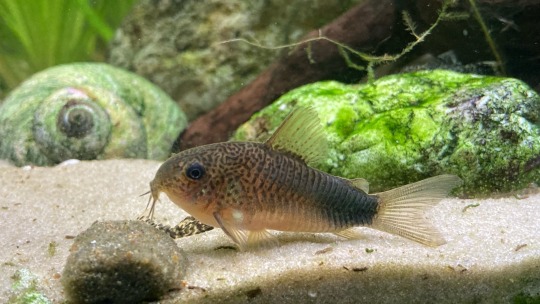
I moved the smudge spot corydoras into my 30 gal so I could see if I could get them breeding. They look really nice on the light sand. Fingers crossed I get some eggs soon 🤞
Corydoras similis
#the baby tank#corydoras#smudge spot cory#aquarium community#aquablr#freshwater aquarium#planted aquarium#planted tank#aquarium#fishblur#fishkeeping
11 notes
·
View notes
Note
You mentioned that the gravel in your 180l tank was sharp and therefore limited what you could keep, why is that? Is it an injury risk or something?
Yes, it's basically a risk for every fish species that isn't a constant freeswimmer, touches the ground or likes to dig.
This includes anything like Corydoras, Kuhli loaches, ancistrus, ropefish, Bichirs, spiny eels, gobys etc. Also a lot of chichlids, cause a lot of them dig, as breeding behavior or for other reasons.
It can cut and injure their bellies, fins and mouth, if they look for food. Some bigger species, like Bichirs, can swallow it as well.
It's important to check what the fish species need. Some fish need rounded gravel, but I don't own any that do, so quartz sand is my default tank substrate. No risk of injury there, it's also the cheapest option and most plants grow well in it too.
4 notes
·
View notes
Text
15 Questions
Rules: Answer the 15 questions, then tag 15 people.
Tagged by @drivablecar Thank you friend!
1. Are you named after anyone?
Sort of. My dad coached basketball for many years, and when they knew I was coming and they started trying out names, they included the names of players currently on the team. So I share a name with a former high school basketball player, but saying I was named “after” her is a bit of a stretch.
2. When was the last time you cried?
I got a little teary watching a news story about the earthquake in Turkey tonight.
3.Do you have kids?
No, and I’m happy that way.
4. Do you use sarcasm a lot?
No~o, never. /s
5. What is the first thing you notice about people?
Hair and clothes I guess?
6. What color are your eyes?
Grey.
7. Scary movies or happy endings?
Happy endings. Horror movies and I don’t get along. I can do monster movies (vampires, werewolves, etc) ok most of the time but not things full of jumpscares and gore.
8. Any special talents?
I can generally get along with almost any cats. I’m that person with whom the owners are like “oh, usually they don’t like strangers”. I also seem to have a knack for finding things.
9. Where were you born?
The same place I live now. I’ve literally never moved, except to go to college.
10. What are your hobbies?
Writing, hanging out with my pets large and small, horseback riding, reading (mostly fic these days), watching c-drama
11. Do you have any pets?
Yep. 10 cats, a dog, two horses, and far more corydoras catfish and mourning geckos than I planned for because they keep breeding. Fun fact about mourning geckos: they don’t need a male to reproduce. So I got one about...three or so years ago? And now I have somewhere in the vicinity of 20. Luckily they’re small and cohabitate well so they don’t need a massive vivarium.
12. What sports do you play/have you played?
The only sport I ever stuck with was horseback riding, but as a child, I played soccer, basketball, volleyball, deck hockey, and did gymnastics.
13. How tall are you?
5'4″
14. Favourite Subjects in School?
Art, Language (French), History, Music.
15. Dream Job?
Cat behaviourist and rescuer.
I tag: Whoever wants to play. Consider yourself tagged!
8 notes
·
View notes
Text
The catfish babies are doing good 😊🤞♥
2 notes
·
View notes
Note
actually also 7 because i always want to see pictures of your aquarium and this seems like a cheat to see pictures of your aquarium :-D
For the ask meme
7. What animal do you look forward to seeing when you visit an aquarium?
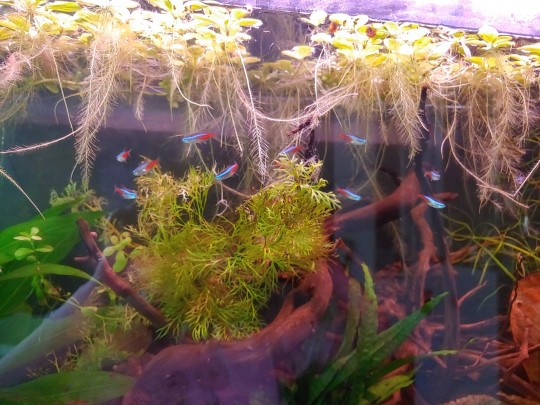

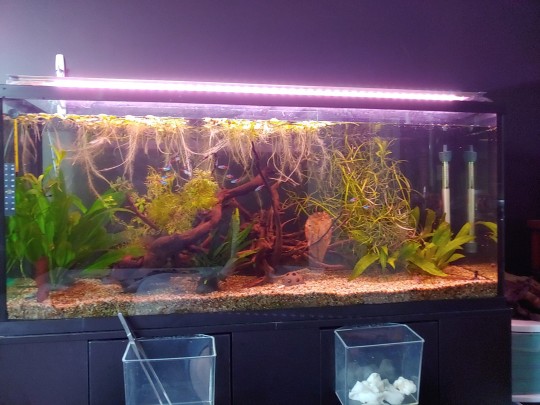

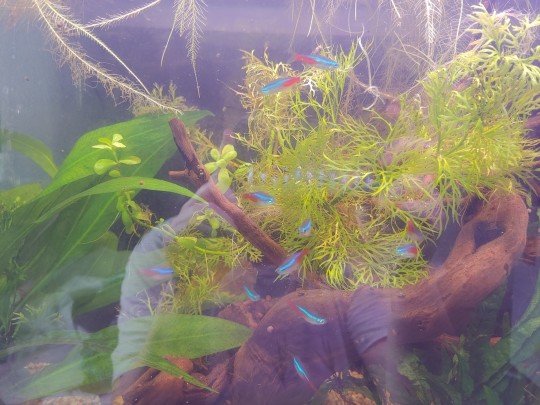

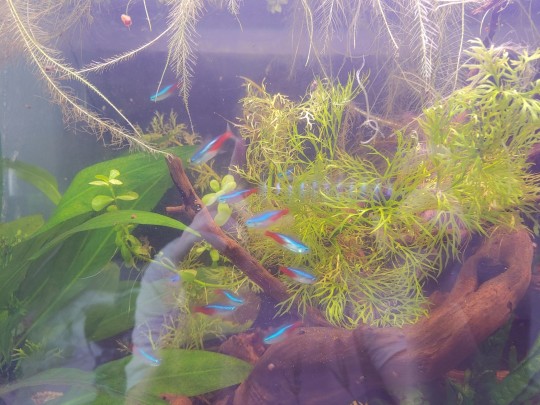
Dude I tried so hard to take good photos and videos but my camera game needs serious help hahahahaha
My answer right now would be my corydoras. They're so derpy and cute. I don't know if I have enough to breed them because a couple died when I was quarantining them but I'd love to get some more so they feel a little more confident.
#wdip#wdip ask#wdip answers#shiny good rock#shiny-good-rock#thank you for wanting to see the tank!#im really proud of how it's looking so far#i didn't really take any good photos of the shrimp or snails#the female amano shrimp are all berried which is fun#nothing will happen since its a freshwater tank#but still fun#im desperate for the blue shrimp to have babies#i dont know if they will in a community tank#wdip fish
4 notes
·
View notes
Text
Blue Snakeskin Guppies: Unveiling the Allure and Facts You Must Know

Discovering Blue Snakeskin Guppies
Unveiling Their Aesthetic Charm
Blue Snakeskin Guppies boast a distinctive and enchanting appearance with vibrant colors and intricate patterns reminiscent of snake scales. These patterns, resembling a snake's scales, run vertically along their bodies, creating a captivating visual spectacle.
Beyond Looks: A Peek into Their Character
Apart from their striking aesthetics, these guppies exhibit a friendly and inquisitive nature. Their active swimming habits, constant exploration, and interaction with other tank mates make them a delightful addition to any aquarium.
Meet the Marvels: Azure Serpent and Emerald Python
Azure Serpent:
The Azure Serpent variety dazzles with a deep blue hue adorned with intricate dark blue snakeskin patterns. The contrast between the vibrant body color and the intricate patterns creates a visually striking display.
Emerald Python:
Featuring rich green shades with emerald-like scales, the Emerald Python Guppies bring an enchanting and regal presence to any aquarium.
Essential Information about Blue Snakeskin Guppies
Origin and Size
Believed to originate from selective breeding efforts in South America, particularly Venezuela and Brazil, these guppies reach an average size of 1.5 to 2.5 inches when fully grown.
Lifespan and Temperament
With proper care, Blue Snakeskin Guppies can live for approximately 2 to 3 years. Known for their peaceful and sociable disposition, they make excellent candidates for community tanks.
Varied Appearances and Pricing
These guppies come in various colors and patterns, including "Royal Serpent," "Crimson Cobra," and "Golden Viper." Prices range between $5 to $20 per fish, depending on coloration, pattern quality, and breeder reputation.
Creating the Perfect Habitat
Native Habitat and Tank Requirements
Blue Snakeskin Guppies thrive in slow-moving freshwater bodies with abundant aquatic vegetation. For aquariums, a minimum 10-gallon tank is recommended, with slightly alkaline water conditions (pH 7.0 to 7.5) and temperatures between 72°F to 82°F.
Tank Setup and Decor
Craft an aquatic paradise with live or artificial plants, driftwood, and smooth substrates. Hiding spots, provided by decorations or dense plantings, mimic their natural habitat.
Nourishing Your Blue Snakeskin Guppies
Diet and Feeding Habits
As omnivores, they relish a diet including high-quality flakes, pellets, and freeze-dried foods. Regular feeding, supplemented with live or frozen treats like brine shrimp, ensures their vibrancy and overall health.
Breeding Insights
Reproduction and Breeding Requirements
Being livebearers, female guppies give birth to live fry. To encourage breeding, maintain optimal water conditions, higher female-to-male ratios, and provide hiding places for fry survival.
Ensuring Health and Addressing Common Issues
Health Considerations and Preventive Measures
Like any aquarium fish, Blue Snakeskin Guppies may face health issues. Regular maintenance, water quality checks, quarantine for new fish, and monitoring fish behavior help prevent and address potential problems.
Harmonious Tank Mates and Identifying Gender Differences
Compatible Tank Mates and Care Tips
Select tank mates with similar temperaments and water preferences, such as Neon Tetras, Platies, or Corydoras Catfish. Provide stable conditions, a balanced diet, and suitable hiding spots for fry.
Distinctive Gender Characteristics
Distinguish males by their smaller size, vibrant fins, and colorful patterns. Females are slightly larger with less colorful fins, and a gravid spot near the anal fin may indicate pregnancy.
Understanding Blue Snakeskin Guppies in Comparison
Similarities and Differences with Other Guppy Varieties
Share common traits with other guppies, such as size, livebearing, and an omnivorous diet. The distinctive feature lies in their intricate snakeskin pattern, setting them apart from other guppy strains.
Embark on your journey with Blue Snakeskin Guppies, blending aesthetics and care for an enriching aquarium experience. Dive into the allure of these aquatic marvels and create a harmonious underwater haven.
0 notes
Text
Explore the World of Blue Ribbon Guppies: A Comprehensive Guide

Blue Ribbon Guppies: An Introduction
Striking Appearance and Playful Personalities
Blue Ribbon Guppies are celebrated for their vibrant colors and intricate patterns, reminiscent of prize-winning ribbons. With sleek bodies and gracefully flowing fins, these fish are not just a visual treat; they also showcase engaging personalities. Watch them playfully explore every nook and cranny of their tank, making them a delight to observe.
Standout Varieties: Sapphire Ribbon and Emerald Elegance
Among the noteworthy Blue Ribbon Guppy varieties, the "Sapphire Ribbon" boasts deep blue hues with iridescent silver streaks, creating a mesmerizing ribbon-like effect. On the flip side, the "Emerald Elegance" displays lush green shades reminiscent of emerald gemstones.
General Information about Blue Ribbon Guppies
Origin, Size, and Lifespan
Blue Ribbon Guppies hail from the tropical waters of South America, particularly in countries like Venezuela and Brazil. With a typical size of 1.5 to 2.5 inches, these petite wonders can thrive for about 2 to 3 years with proper care. Known for their peaceful temperament, Blue Ribbon Guppies easily coexist with other non-aggressive fish species.
Vibrant Colors and Patterns
As the name suggests, their appearance steals the show. These guppies showcase a dazzling array of colors—blues, greens, reds, and yellows—often adorned with intricate patterns resembling ribbons. Popular varieties include "Royal Ribbon," "Golden Streamer," and "Crimson Cascade."
Habitat and Tank Requirements
Blue Ribbon Guppies flourish in slow-moving freshwater bodies in their native habitat. To recreate a cozy home for them, a tank of at least 10 gallons is recommended, with slightly alkaline water (pH 7.0 to 7.5) and a temperature range of 72°F to 82°F. Elevate their environment with live or artificial plants, driftwood, and smooth substrates.
Feeding Blue Ribbon Guppies
Omnivorous Diet and Enthusiastic Eating Habits
These guppies relish a blend of plant and animal-based foods. Provide high-quality flakes, pellets, and freeze-dried treats as their primary diet, complemented by live or frozen indulgences like brine shrimp, daphnia, and bloodworms. Feed them small portions multiple times a day, and witness their eagerness as they swim to the surface for meals.
Breeding Blue Ribbon Guppies
Livebearing and Spawning Process
Blue Ribbon Guppies are livebearers, giving birth to live fry. To encourage breeding, maintain optimal water conditions, a higher ratio of females to males, and offer hiding places for fry. Breeding kicks off with males showcasing colorful displays, leading to mating and multiple batches of fry.
Common Health Issues and Preventive Measures
Hardy Yet Vulnerable
While generally hardy, Blue Ribbon Guppies may encounter health issues like fin rot, ich, and parasites. Ensure clean water conditions, quarantine new fish, and maintain a balanced diet to prevent concerns. Regularly monitor your guppies for any signs of distress.
Compatibility and Special Care Instructions
Peaceful Tankmates and Well-Maintained Aquariums
Blue Ribbon Guppies coexist peacefully with non-aggressive fish species. They thrive in well-maintained aquariums, requiring stable water parameters. Regular water testing and maintenance are crucial for their health and longevity.
Legal Considerations and Varieties Compatibility
Stay Informed
Stay aware of local regulations regarding Blue Ribbon Guppy ownership and breeding. Some areas may have specific requirements. Explore compatible tankmates, including Neon Tetras, Harlequin Rasboras, Corydoras Catfish, Dwarf Gouramis, Endler’s Livebearers, Cherry Shrimp, and Otocinclus Catfish.
Distinguishing Blue Ribbon Guppies from Others
Male and Female Differences and Unique Traits
Male Blue Ribbon Guppies are more colorful and display intricate patterns, while females are slightly larger with less intense coloration. Despite these differences, all guppies share fundamental characteristics such as size, livebearing, omnivorous diet, and species.
In conclusion, Blue Ribbon Guppies stand out with their vibrant blue coloration, setting them apart from other guppy varieties. Follow these guidelines for their care, and relish the beauty they bring to your aquatic world. Happy fishkeeping!
0 notes
Text
New blog new intro - fish yeah
Wanna meet my water dogs? Yeah you do.
Ten Gallon
• Khonshu - Galaxy Koi Plakat Betta
• 2 Adult Ramshorn Snails + their criminal amount of children
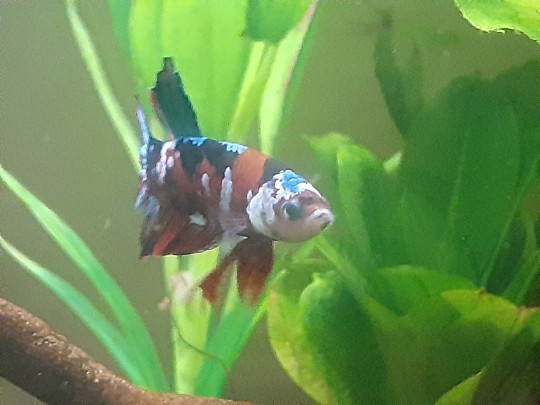
Bought this pretty boy over this summer. He's in his main character era and currently can't decide what colour he wants to be.
Konch has a liking for brine shrimp and bloodworms, and detritus worms.. and ghost shrimp. Oh and baby ramshorn snails. Quite the palate on that one. Sometimes he'll accept a rogue betta buffet pellet.
Currently in the works of getting some pipe cleaners and maybe training him some.
29 Gallon
• 10 Glowlight Tetras
• 9 Bandit Corydoras
• 2 Honey Gourami (Marner & Nylander)
• 2 Mystery Snails
• 2 Black Racer Nerite Snails


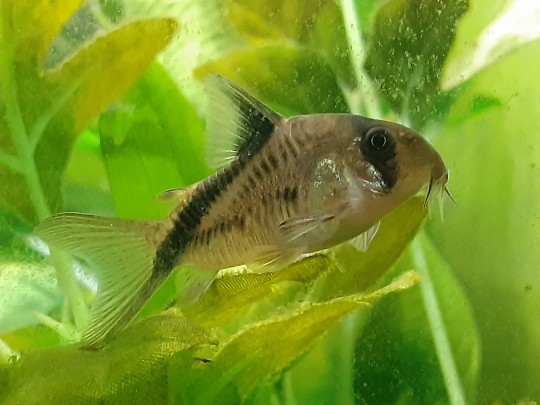
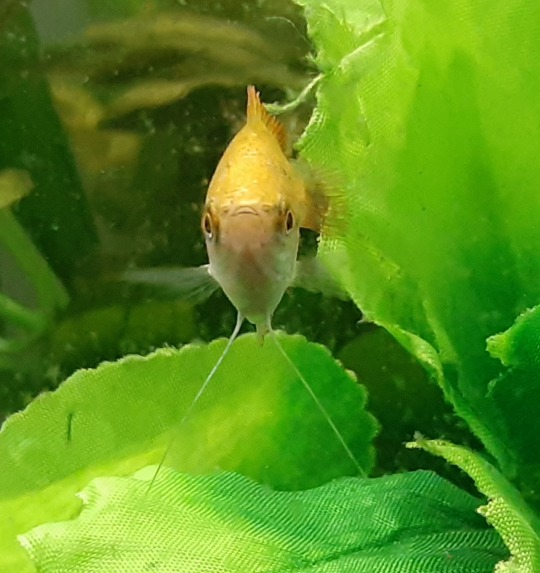
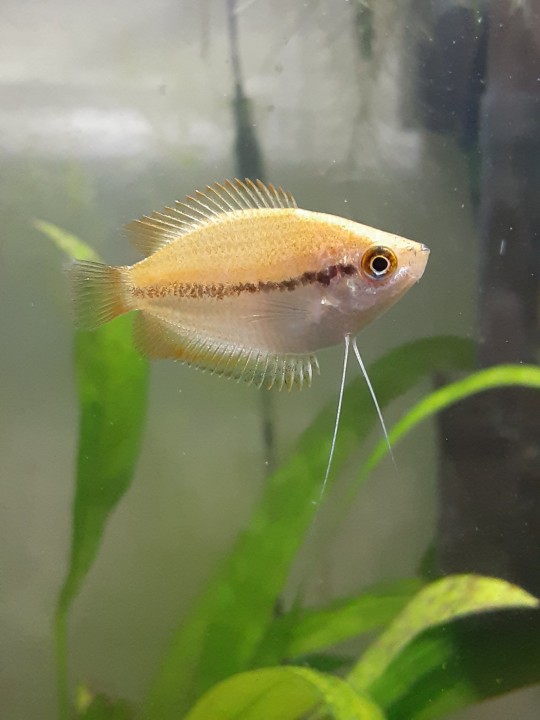

This is my fun little community tank. My little side gig if you will. Based finished, except for a final addition of a third honey gourami (hopefully soon) and possibly a third mystery snail. If the mysteries ever start to breed I could bring in some babies to the LFS and sell them. If not then that's fine and I'll take what I can get. Yes I did name my gouramis after hockey players and yes I can tell them apart by one single black scale.
Future Projects
I'd love to set up a 3rd tank, walstad method. My stocking would either be a colony of shrimp or a single betta. I'd attempt this in a 5.5 gallon. If this happens or not, who knows, but the idea is definitely there.
For future future projects, I'd love to set up a 75 gallon community tank when I get my own place. Stocking I'm unsure about, but a large school of something like swordtails or platies is something that has always captivated me.
#fishblr#betta#betta fish#glowlight tetra#tetras#tetra#corydoras catfish#corydoras#bandit corydoras#thick lipped gourami#thick lip gourami#hffmarner#hffkhonshu#hfftetras#hffcories
0 notes
Text
youtube
29 Gallon Fish Tank Pros and Cons - Is This the Perfect Starter Aquarium? 🐠 Discover the Benefits and Challenges of a 29 Gallon Aquarium 🐟 Are you considering a 29 gallon fish tank for your home or office? This video delves into the pros and cons to help you determine if it's the right choice for your aquatic friends. Pros of a 29 Gallon Tank: Versatility: Ideal for a variety of fish, including species-specific and community tanks. Perfect for non-aggressive fish like tetras, corydoras, and guppies. Aquascaping Opportunities: Large enough for impactful aquascaping with plants taking center stage. Breeding Potential: Suitable for breeding popular tropical fish and shrimp. Stocking Options: Offers more freedom in fish selection than smaller tanks. Ideal for shoaling fish and community-friendly centerpiece fish like honey gourami. Plant Growth: Accommodates larger live plants, enhancing the aquascape. Affordable Accessories: Most equipment remains reasonably priced, unlike larger tanks. Filtration Variety: Supports a range of filters, suitable for different fish and bioloads. Stable Water Parameters: Larger volume helps maintain stable conditions, reducing the impact of ammonia spikes. Cost-Effectiveness: Offers more space while being budget-friendly. High-End Options: Availability of premium tanks for aquascaping and regular fish-keeping. Hardscaping Possibilities: Allows for larger driftwood, rocks, and branches, providing ample hiding spots. Cons of a 29 Gallon Tank: Algae Maintenance: Larger surface area may lead to quicker algae growth. Placement Challenges: Requires sturdy support due to its weight. Plant and Substrate Costs: Planting costs can escalate, especially without existing plants for cuttings. Food Removal Issues: Due to increased hiding spots, uneaten food can be harder to locate. Stocking Mistakes: Risk of housing fish that should ideally be in larger tanks. Fish Counting Challenges: Larger size makes it tricky to keep track of all fish. In my own 29 gallon tank, I enjoy a peaceful community of honey gourami, neon tetras, chili rasboras, corydoras, cherry shrimp, and amano shrimp, all coexisting without aggression.
#aquarium#fishkeeping#fish tank#tropicalfish#fishtank#aquariumhobby#planted aquarium#planted tank#Youtube
0 notes